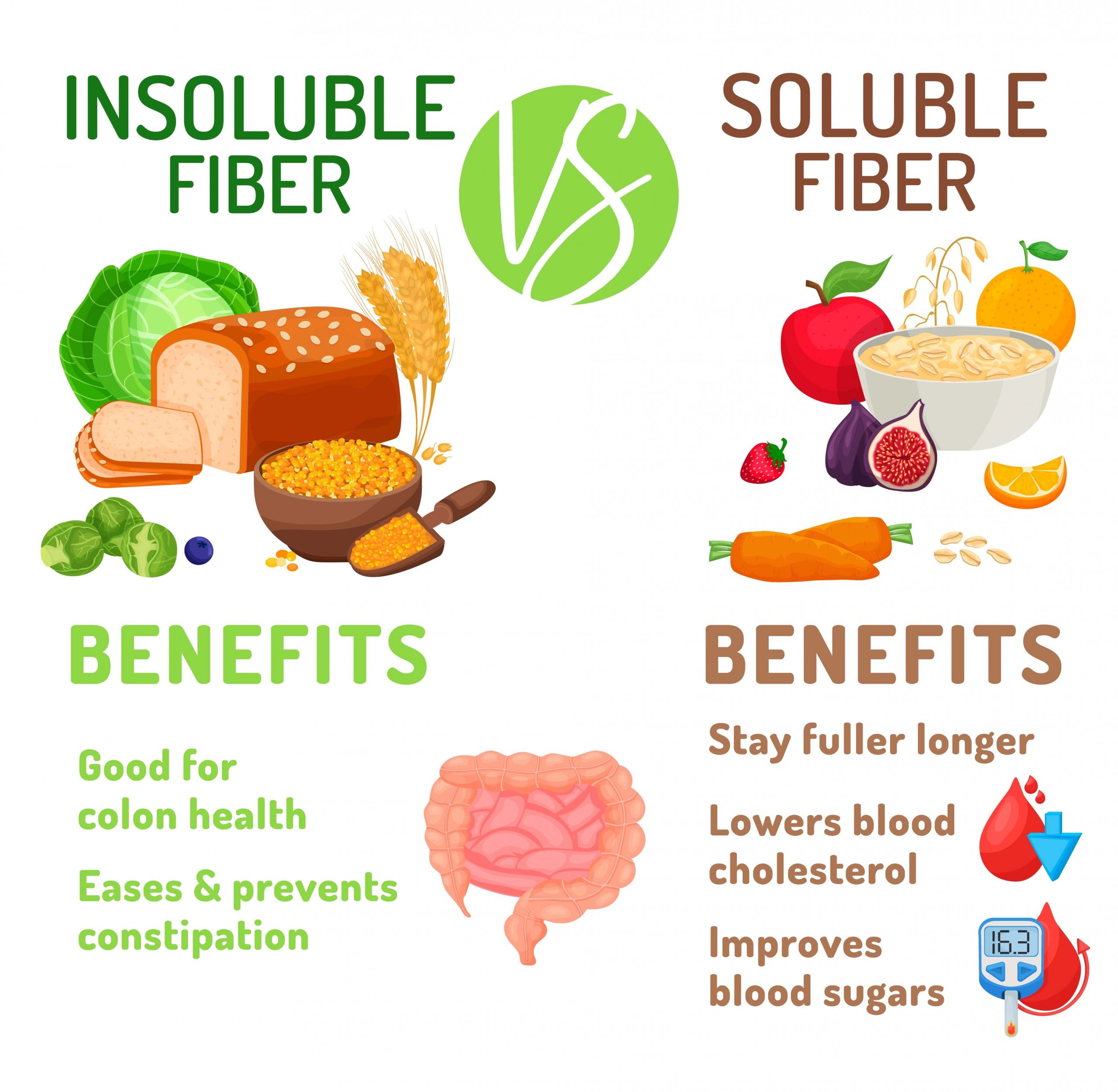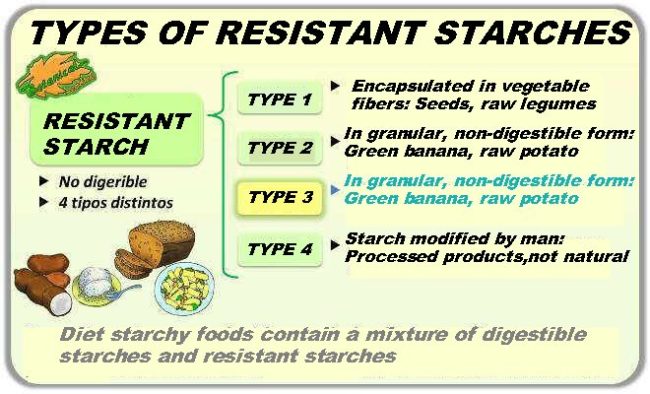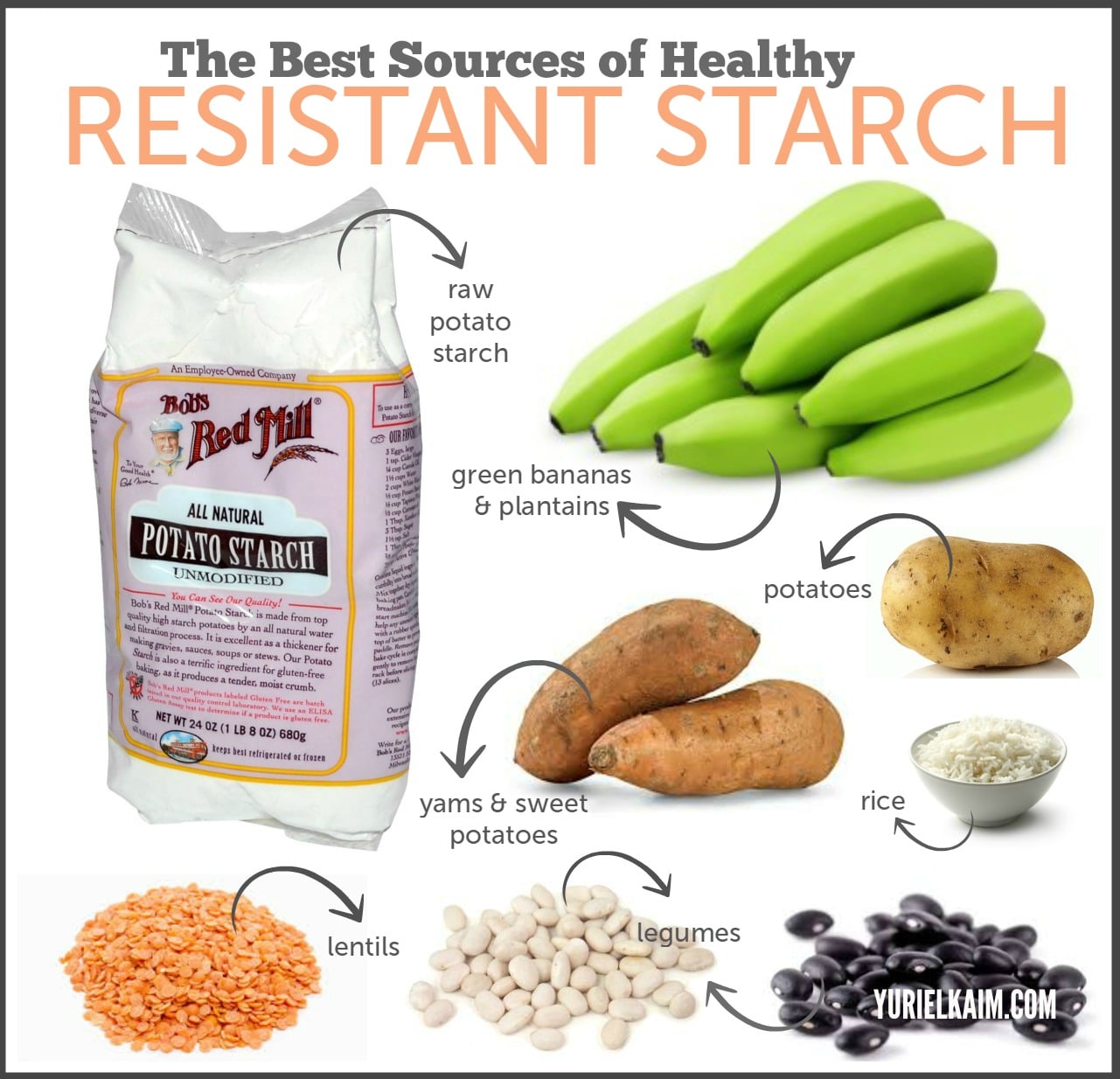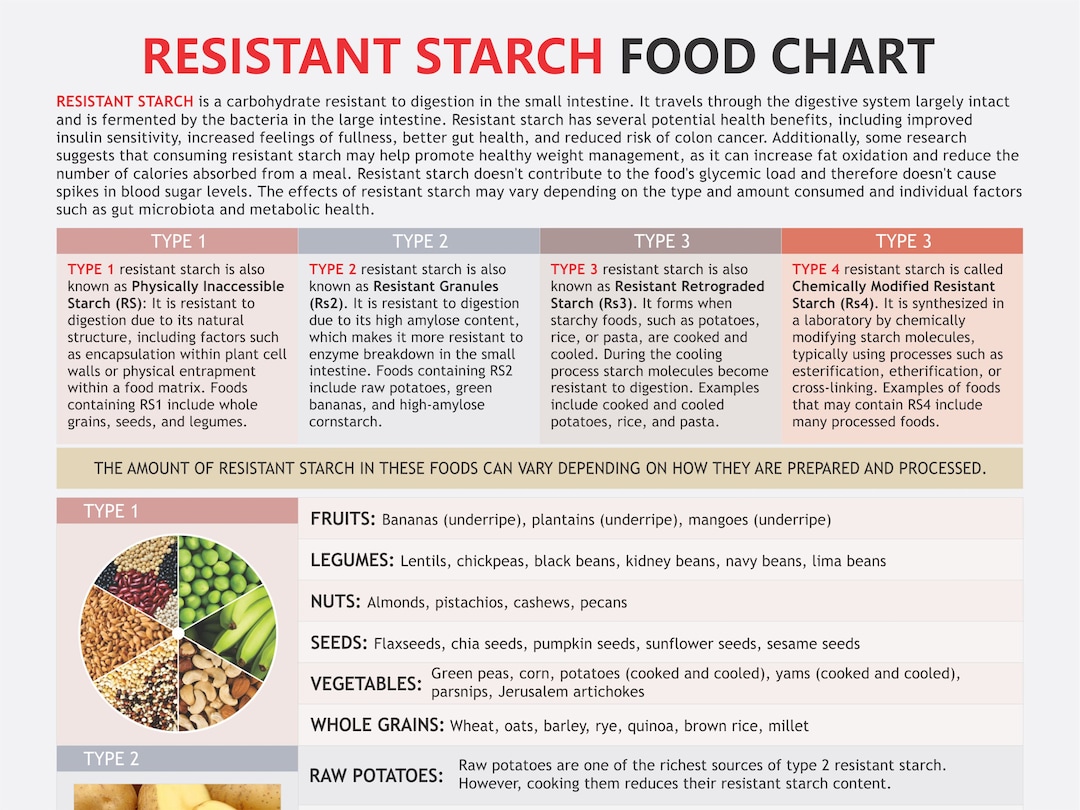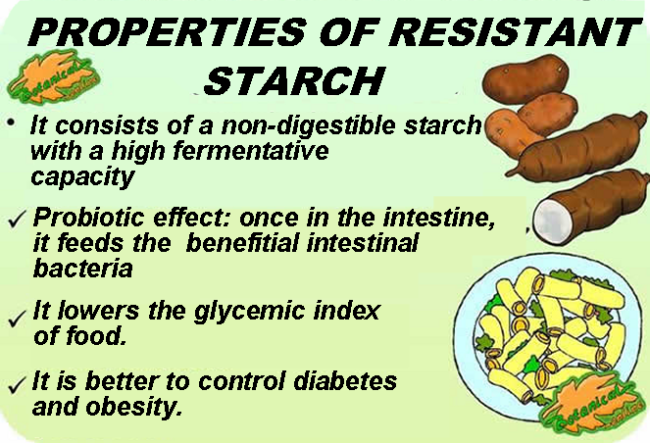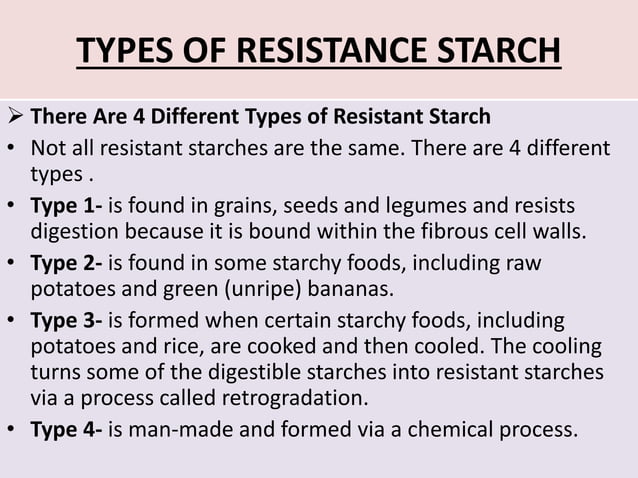Which Of The Following Is Not A Resistant Starch

A critical misunderstanding of dietary science is spreading: not all starches benefit your gut. Consumers and health professionals alike must immediately recognize the distinctions between starch types to optimize nutritional strategies.
The key question is, which starch *doesn't* confer the gut health benefits associated with resistant starch? This article cuts through the confusion, clarifying the specific starch that fails to meet the resistant starch criteria and highlighting the implications for dietary choices.
Understanding Resistant Starch
Resistant starch (RS) is a type of starch that resists digestion in the small intestine. Unlike other starches that are broken down into glucose and absorbed, RS passes into the large intestine where it is fermented by gut bacteria.
This fermentation process produces beneficial short-chain fatty acids (SCFAs) like butyrate, acetate, and propionate. These SCFAs provide energy for colon cells, reduce inflammation, and improve insulin sensitivity.
Types of Resistant Starch
There are four main types of resistant starch, classified by their origin and structure. Understanding these differences is crucial for identifying which starch *does not* belong to this beneficial category.
- RS1: Physically inaccessible starch, trapped within cell walls of grains and seeds.
- RS2: Granular starch found in raw potatoes, green bananas, and high-amylose corn.
- RS3: Retrograded starch, formed when cooked and cooled starchy foods like rice and potatoes are cooled.
- RS4: Chemically modified starch, created through industrial processes.
The Culprit: Rapidly Digested Starch (RDS)
The starch that *is not* a resistant starch is Rapidly Digested Starch (RDS). RDS is quickly broken down into glucose in the small intestine. This causes a rapid spike in blood sugar levels.
Foods high in RDS include refined grains like white bread and instant rice. These starches offer minimal gut health benefits compared to resistant starch.
Why the Confusion?
The term "starch" is often used generically, leading to a failure to distinguish between different types. Many consumers are unaware of the physiological differences between RDS and RS. This lack of awareness can sabotage efforts to improve gut health through diet.
Marketing claims often further complicate the issue. Products may be advertised as "starchy" without specifying the proportion of RS versus RDS.
The Impact on Health
Consuming primarily RDS can lead to several negative health outcomes. These include increased risk of type 2 diabetes, weight gain, and inflammation.
In contrast, a diet rich in resistant starch promotes gut health, improves blood sugar control, and supports weight management. Shifting dietary choices towards RS-rich foods can have a profound impact.
Making Informed Choices
To optimize your intake of resistant starch, prioritize whole, unprocessed foods. Focus on incorporating cooled cooked rice and potatoes, legumes, and whole grains into your diet.
Be wary of refined grains and processed foods. These are typically high in RDS and offer little nutritional value.
Moving Forward
Increased education about the different types of starch is crucial. Registered dietitians and healthcare providers must emphasize the distinction between RDS and RS.
Further research is needed to fully understand the optimal intake of resistant starch for various populations. Ongoing studies will shed light on the long-term health benefits of prioritizing RS over RDS.
